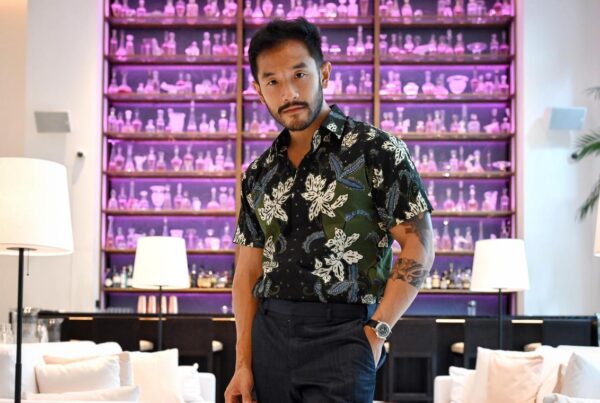How to spot fraud & fakery in influencer marketing
Also known by many as the fastest growing industry in marketing, influencer marketing has been readily adopted into the strategies of multiple brands.
While there are many positive benefits of influencer marketing, there have also been rising concerns about the fraud associated with this industry. After all, the arena of social media remains relatively new to many companies. There remains a lot to learn about combating fraud and fakery existing in this industry.
To better understand how to prevent this phenomenon of fake information in influencer marketing, we have to first understand the nature of influencer marketing fraud.
Understanding influencer marketing fraud
We start off with a simple introduction of influencer marketing fraud & fakery. It generally can be defined as fake statistics to mislead a brand. These can include fake followers, engagement rates, fake interest and fake brand deals.

source: PYMNTS.com
Some of you might be wondering how users are doing so. Well, the manipulation of such fact data is usually done through a few means.
Firstly, the use of bots. These are pieces of software designed to automatically like, comment and share social media posts, distorting the numbers on one’s social media account.
Secondly, the use of ‘trading’. In this case, users join a community that allows people to “trade” engagement back and forth. This means that for every like you give to someone in the community, you can expect a like on your own posts.
Thirdly, the buying of stock images to create fake interests. There are social media accounts online that buy stock images to make it seem like they are knowledgeable in a field. For example, users can upload vacation stock images to give the impression of a travel influencers. Misleading travel related brands into hiring them.
Lastly, some users have uploaded fake brand collaborations to make their accounts seem reliable. This can be done by adding the #ad to non-sponsored post. Another way is to position their captions in an angle that seem sponsored. An example given by The Atlantic— “Instead of

source: InfluencerDB
An influencer’s follower growth is a good measure of how reliable their account is. The ideal follower growth path would be a linear line. A steady follower growth is most likely to happen if there is no manipulation of followers.
On the other hand, fake accounts on social media tend to have large increases and drops in follower count. The purchase of bots to boost influencer growth can lead to a sudden spike in follower growth.
Therefore, marketers often use follower growth statistics to determine the ‘realness’ of an influencer account.
Preventing Influencer marketing fakery step #2: Monitoring influencer follower relationship

source: Refinery29
Since influencers produce content to engage and grow their followers, it can be said that the main purpose of their accounts is to build an engaged community on social media. This explains the common practice of influencers interacting with their followers. They do so by replying to comments, liking tagged posts and even replying to direct messages.
Therefore, how often an influencer interacts with their followers can be an indicator of how authentic an account is. If an influencer has absolutely no interaction with his/her followers, the account is most likely to be a fake one.
Preventing Influencer marketing fakery step #3: Look into an influencer’s Posting consistency

source: Buffer
Fake social media accounts tend to have a spike in the number of posts published when the accounts are first set up. (for credibility)
Subsequently, the number of post uploaded might slow down or even come to a complete stop.
On the other end of the scale, there are some who update their social media accounts constantly. These accounts are likely the accounts of authentic influencers. This is because influencers tend to produce content on a regular basis to connect with their followers.
Preventing Influencer marketing fakery step #4: Look into an influencer’s Engagement consistency

source: Instagram Followers Marketing
Influencers mostly have a category of content they are focused on. For example, we have fashion influencers, tech influencers and beauty influencers.
Typically, the number of likes tend to dip when a fashion influencer posts about another topic. If you typically follow an influencer for her outfit choices, won’t you be less likely to like a picture if she/he decides to post a picture of her meal on that day?
Therefore, real influencers tend to have dips in the number of engagement obtained when posting about something outside of their niche. This Means that less users might comment and like such postings
Preventing Influencer marketing fakery step #5: Measure the influencer’s engagement in relation to their audience size

source: Hopper HQ
This is known as engagement rate. Which refers to the ratio of total engagement to total number of followers. Engagement refers to the number of likes, shares and comments on an influencer’s posting.
If an influencer has a large audience, but the number of comments/likes is largely disproportionate to the follower count, you could be facing an influencer with manipulated statistics.
Conclusion
Yes, it in undeniable that influencer marketing fraud and fakery has been an issue many have to deal with as of late. However, with the help of appropriate measures, we can all combat the falsehoods in this digital world.
Sources
Theatlantic.com,influencers-are-faking-brand-deals
Socialbakers.com, fake-social-media-influencers
Entrepreneur.com, article/331719






